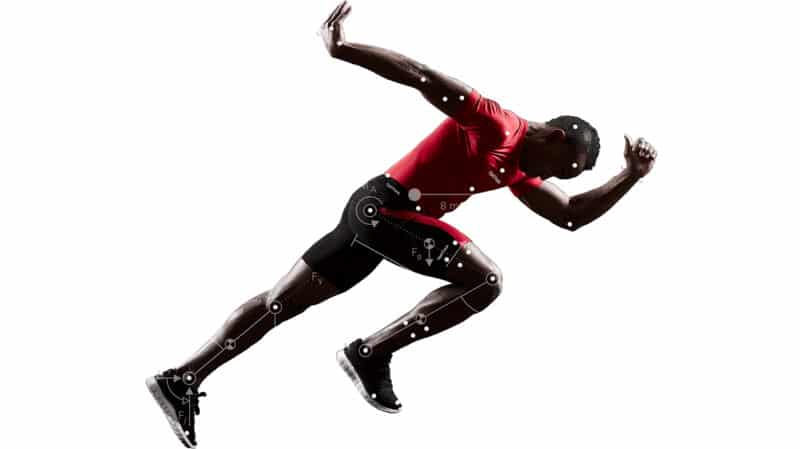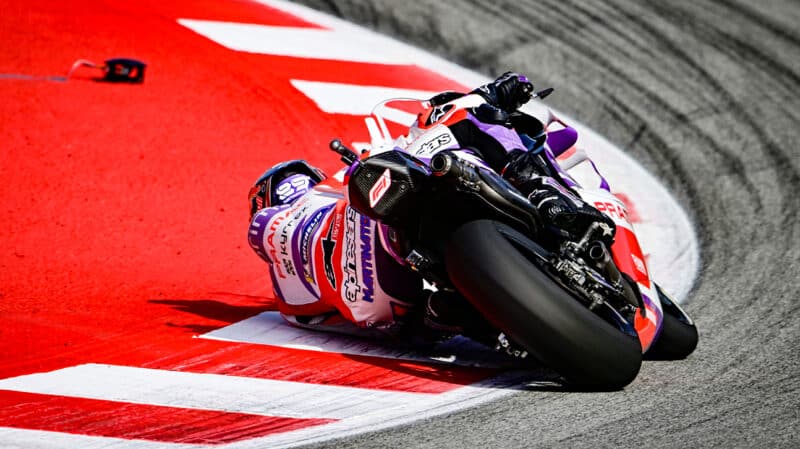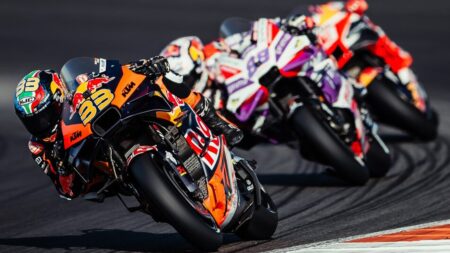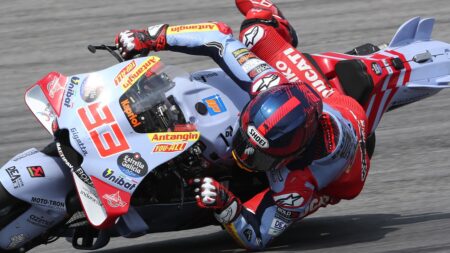Manufacturers already spend a lot of time and money using video analysis. Some employ their own cameraman who stand trackside and shoot motorcycles in all phases – braking, cornering, acceleration – and then use special software to overlay different bikes and riders, always searching for new knowledge and tiny improvements.
“Sensors on riders could make a huge difference,” says Pecco Bagnaia’s crew chief Cristian Gabarrini. “To know how the rider moves on the bike would be very interesting.
“Also, the pressure the riders put into the handlebars and footpegs would be very interesting. Because maybe one rider is in the same position as another, but he puts different pressure into the footpeg at a certain corner.”
“In F1 you know where the driver is,” says Aprilia rider Aleix Espargaró‘s crew chief Antonio Jiminez. “In MotoGP the guys move everywhere, so for sure if we could see how the rider changes the bike’s dynamic centre of gravity it would be very important.”

Companies like OptiTrack provide body sensors for movement sciences, to improve the performance of athletes and so on
OptiTrack
In fact, Aprilia is already looking into this.
“We are planning to do this kind of thing, because the most difficult point in making computer simulations is to simulate the rider as a control system that guides the bike – that’s very difficult,” says Aprilia’s MotoGP tech chief Romano Albesiano. “On the data we have now we can see where the loads are, but we don’t know where the rider is and what kind of pressure he is putting into the bike. Absolutely this is an important point of investigation.”
And Ducati is onto it too.
“This is the edge of our research, so I cannot talk about it too much,” says Riccardo Savin, Ducati’s MotoGP chassis and vehicle dynamics engineer. “But for sure understanding where the rider is and what he’s doing is very important for vehicle dynamics, aerodynamics and also ergonomics. We know the lean angles, the loads, but we don’t know where rider is.”





